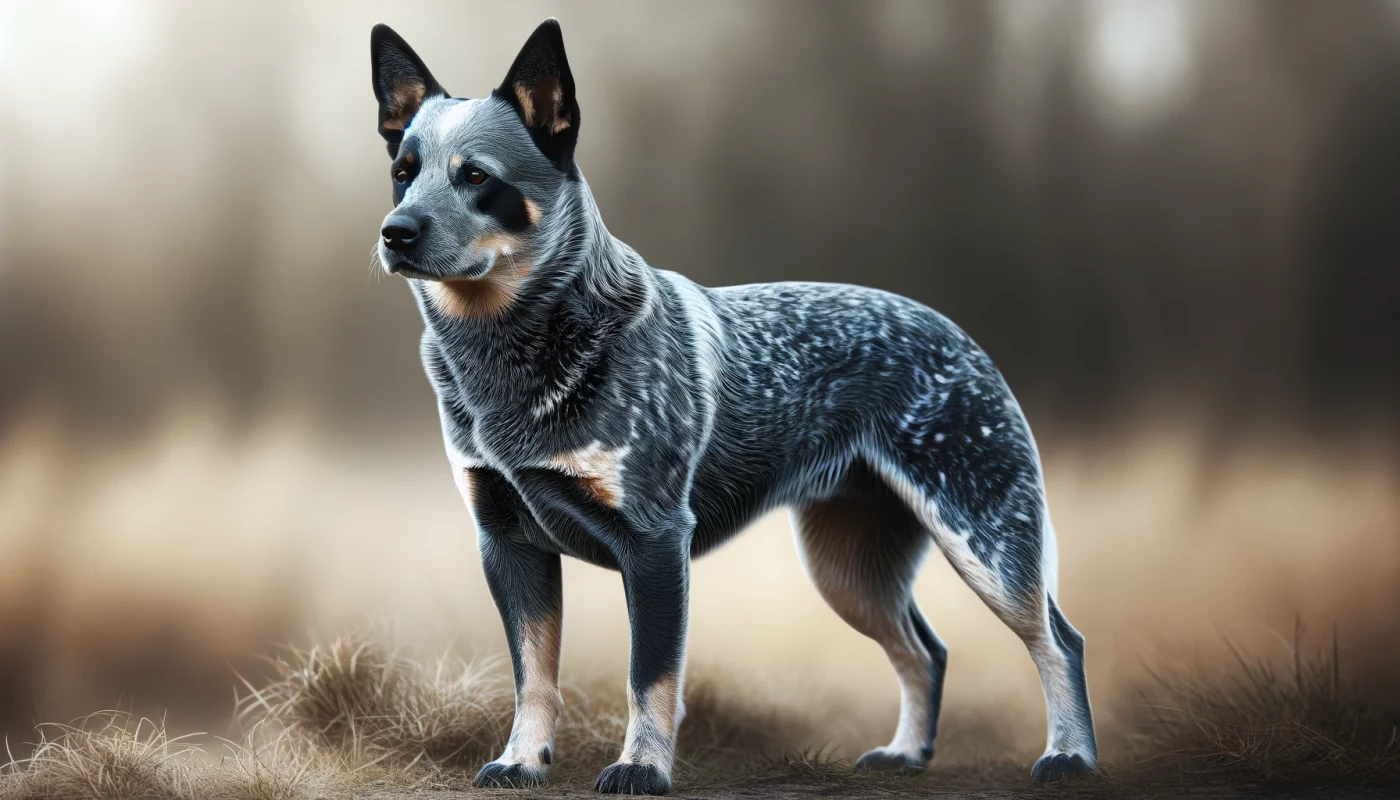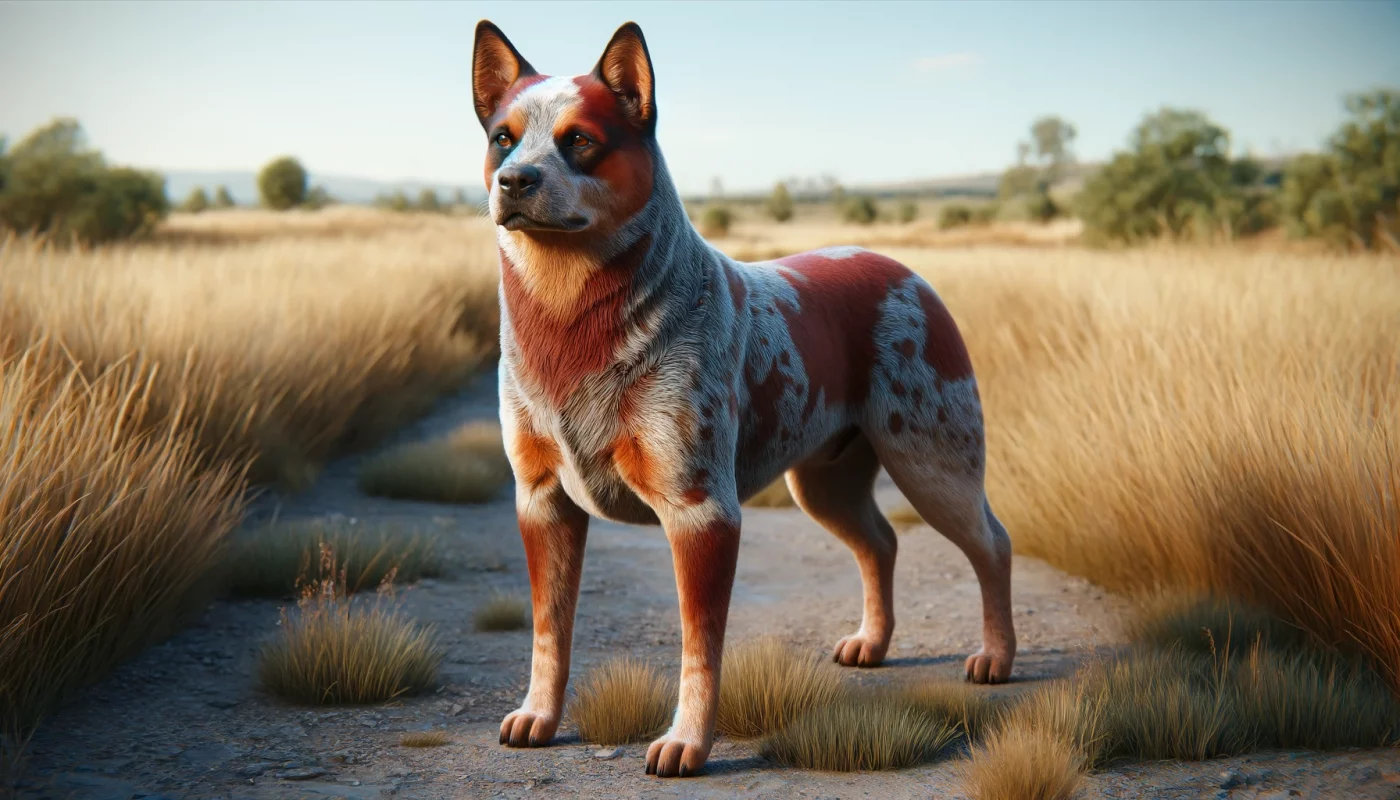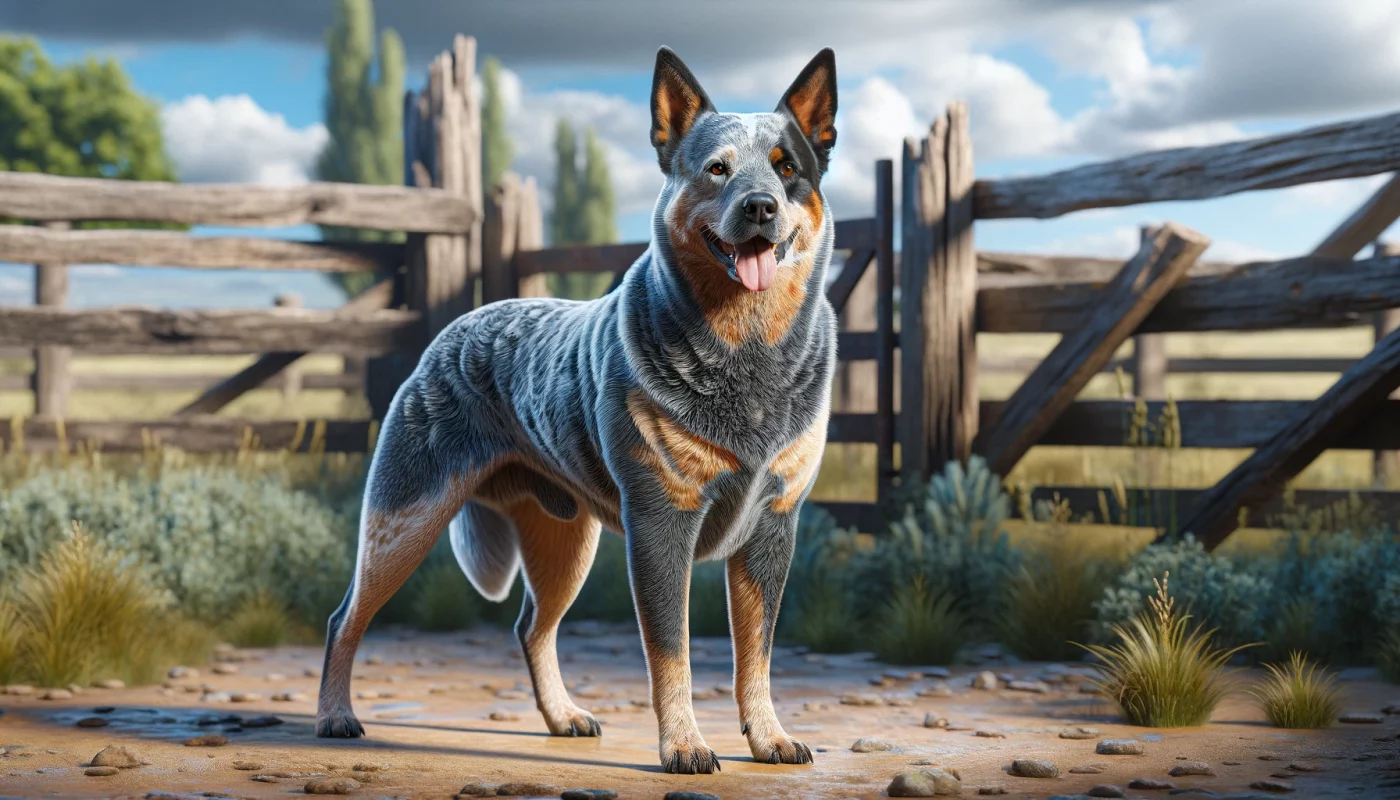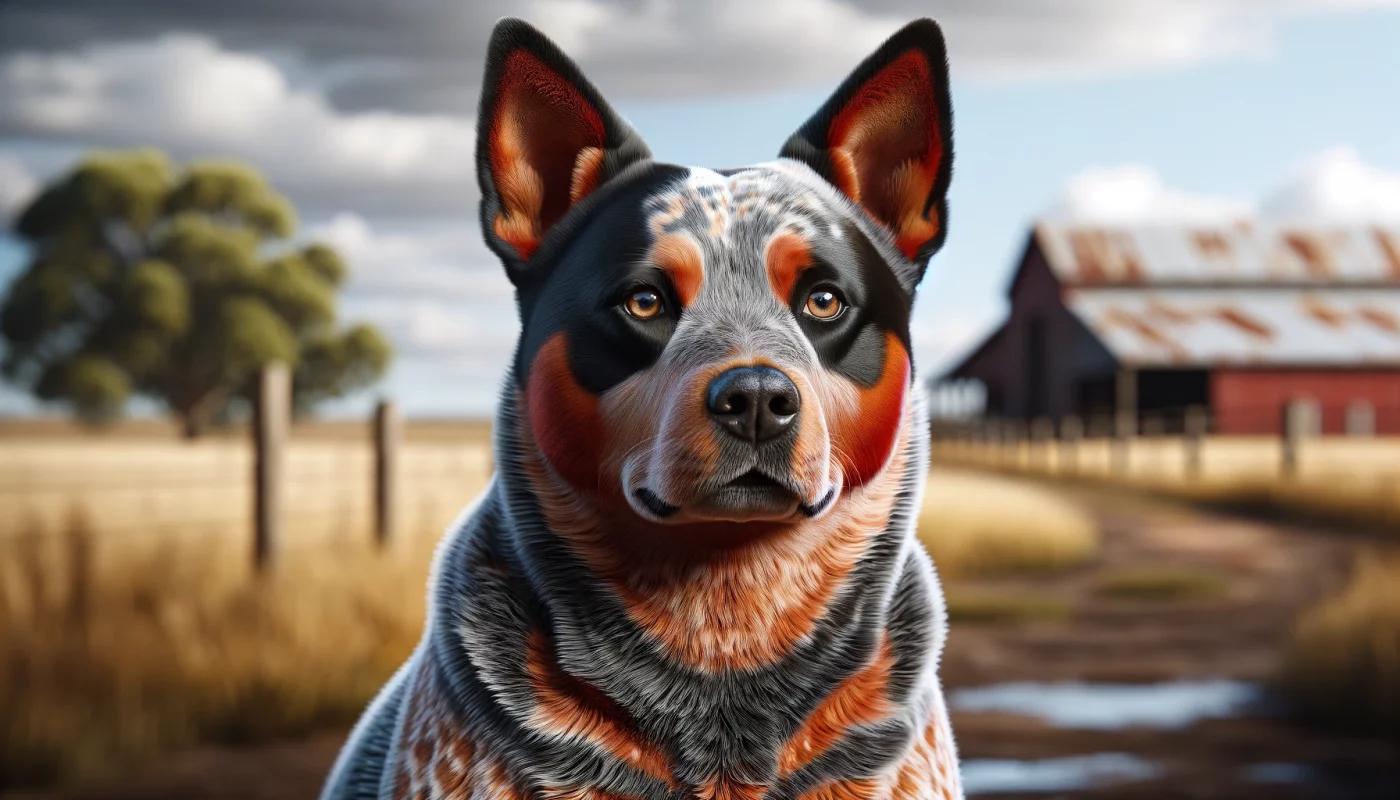The Australian Cattle Dog, a robust and energetic breed, is renowned not only for its exceptional herding abilities but also for its striking and diverse coat colors. Originally bred by Australian settlers to handle herds of cattle on expansive ranches, these dogs are characterized by their intelligence, agility, and loyalty. The breed’s distinct appearance and coloring are due to its unique genetic makeup, which includes influences from wild dingoes. Australian Cattle Dogs come in a variety of color patterns, which not only enhance their visual appeal but also reflect their historical breeding purposes. Here, we explore seven stunning color variations of the Australian Cattle Dog, each accompanied by a vivid description that highlights their beauty and uniqueness.
1. Blue

The Blue Australian Cattle Dog is perhaps the most iconic color variation of this breed. Sporting a coat that ranges from light blue to a deep slate, these dogs often exhibit a mottled or speckled pattern that includes black, blue, and white hairs. Their distinctive “blue” hue is further accentuated by darker markings on the head and around the eyes, which lend a mask-like effect. This color variation is not only visually striking but also serves as a camouflage when herding cattle in Australian bushland, reflecting the breed’s functional origins.
2. Red Speckle

The Red Speckle Australian Cattle Dog showcases a coat that is a vibrant mix of red and fawn colors, with the individual hairs being tipped with red. Like their blue counterparts, these dogs may also display darker red patches, especially on the head and ears, creating a fiery, expressive appearance. The red speckle coat is less common but highly valued for its stunning, unique look that catches the eye in both rural and urban settings.
3. Blue Speckle

The Blue Speckle Australian Cattle Dog features a lighter and more diluted blue color compared to the standard blue. This variation includes a base of white or cream with blue-tipped hairs scattered throughout, giving an almost frosted appearance. The speckled pattern enhances the dog’s rugged look while maintaining the breed’s characteristic robustness and agility. Owners and breeders alike prize this color for its rarity and distinctive appeal.
4. Blue Mottled

Another fascinating variation is the Blue Mottled Australian Cattle Dog. This color scheme involves a more intense speckling pattern, where larger patches of dark blue are interspersed with lighter blue and white specks throughout the coat. This results in a more dramatic and patchy appearance, which is highly distinctive. The blue mottled coat not only adds to the aesthetic appeal of the breed but also serves practical purposes by helping the dog blend into various landscapes during herding.
5. Red Mottled

The Red Mottled Australian Cattle Dog carries a similar pattern to the blue mottled but in shades of red. This variation features a mix of deep red and lighter red patches that provide a vibrant contrast against the white or light cream background of the coat. The red mottled is particularly striking in sunlight, as the red hues can appear almost glowing, highlighting the dynamic and energetic nature of the breed.
6. Patched Blue

Patched Blue Australian Cattle Dogs are a rarity and exhibit large, solid blue patches over a primarily white or lightly speckled coat. These large blue patches can appear over the eyes, ears, and sometimes covering large parts of the body, giving each dog a unique, almost bespoke appearance. This coloration is especially prized for its boldness and individuality, making each patched blue dog a distinctive member of the breed.
7. Patched Red

Similar to the Patched Blue, the Patched Red Australian Cattle Dog displays large, vivid red patches that starkly contrast with a predominantly white or cream base coat. The red patches add a dramatic flair and are a testament to the breed’s varied genetic heritage. These dogs not only stand out in appearance but also embody the spirited, resilient nature of the Australian Cattle Dog breed.
Australian Cattle Dogs are as diverse in their color variations as they are in their capabilities and personalities. From the subtle hues of blue and red speckles to the bold, patched appearances, each color variation carries a story of the breed’s past and its adaptation to the rugged Australian landscape. These colors not only make the Australian Cattle Dog a joy to behold but also enhance their visibility in working environments, showcasing the perfect blend of form and function. Whether you’re a breeder, a herder, or simply a dog enthusiast, the stunning array of colors in the Australian Cattle Dog breed is sure to captivate and impress.
Frequently Asked Questions About Australian Cattle Dog Colors
1. What are the most common colors for Shar Peis?
Shar Peis come in a variety of colors, but the most common ones are fawn, cream, and black. These colors often have a solid distribution, but shades can vary slightly depending on genetics. Fawn can range from light tan to a deep, reddish hue, cream is typically a light beige, and black is rich and uniform across the coat. It’s important to note that regardless of color, the coat should be short, harsh, and bristly, and the skin should have the breed’s characteristic wrinkles.
2. Are there any rare colors for Shar Peis?
Yes, Shar Peis can also exhibit some rare colors such as blue, chocolate, and isabella. These colors are less common and can be highly sought after. Blue Shar Peis have a distinct dilute black color that gives them a striking appearance. Chocolate Shar Peis possess a rich, deep brown coat, while isabella is a lighter, dilute chocolate color that appears almost lilac in certain lights. These rare colors follow the same breed standards in terms of coat quality and texture.
3. Can Shar Peis have patterns in their coat?
While Shar Peis are predominantly known for their solid-colored coats, some dogs can exhibit patterns such as brindle or flowered coats. Brindle Shar Peis have a mixture of dark and light stripes, giving them a tiger-stripe effect. Flowered Shar Peis, which are quite rare, have a predominantly white coat with large patches of color. These patterns are genetically inherited and do not affect the quality or texture of the dog’s coat.
4. What determines a Shar Pei’s coat color?
A Shar Pei’s coat color is determined by its genetics. The color of the coat is controlled by various genes that dictate the distribution of melanin in the fur. For instance, the B gene determines whether a dog will have black or brown fur, while the D gene controls whether the color will be dilute (blue or isabella) or dense (black or chocolate). Breeders can predict potential coat colors by understanding the genetic makeup of the breeding pair.
5. Does coat color affect a Shar Pei’s health?
Coat color in Shar Peis does not inherently affect their health; however, certain colors linked to specific genetic traits may be associated with health issues. For example, blue and isabella Shar Peis carry a dilute gene which can be associated with a condition called Color Dilution Alopecia. This condition can cause thinning hair and sensitive skin. It is important for owners to be aware of this if they own or are considering a Shar Pei with one of these dilute coat colors.
6. Are Shar Peis’ coat colors linked to specific temperaments?
No, there is no scientific evidence to suggest that a Shar Pei’s coat color influences its temperament. Temperament is influenced by a variety of factors including genetics, environment, and socialization, but coat color is not directly correlated. Shar Peis, regardless of coat color, tend to be independent, loyal, and sometimes aloof with strangers, in line with breed temperament standards.
7. How do different coat colors affect Shar Peis’ grooming needs?
Shar Peis generally have similar grooming needs regardless of their coat color. Their short, bristly fur requires regular brushing to remove dead hair and stimulate the skin. However, lighter colors like cream may show dirt more easily and might require more frequent bathing. Regardless of coat color, it’s crucial to regularly clean their wrinkles to prevent infections and maintain overall skin health.
8. Can a Shar Pei’s coat color change as it ages?
Yes, a Shar Pei’s coat color can change slightly as it ages. Puppies might be born with darker or lighter colors that change as they mature. Often, colors may fade slightly or become slightly more intense. For example, a black puppy may develop a slightly lighter coat, or a blue puppy might see a more pronounced dilute effect as they grow.
9. Is there a preferred coat color for Shar Peis in dog shows?
In dog shows, Shar Peis are judged based on the breed standards set by kennel clubs, which focus on overall conformity rather than specific coat color. However, some colors like solid black, fawn, and red are more traditional and might be more commonly seen in the show ring. Rare colors such as blue and flowered might be less common, but they are equally recognized under breed standards.
10. How can potential Shar Pei owners choose the right coat color?
Choosing the right coat color in a Shar Pei largely depends on personal preference as all colors are accepted in breed standards. Potential owners should focus more on the health, temperament, and breeding practices of the dog rather than the coat color. It is beneficial to visit the breeder, see the puppies with their mother, and discuss health screenings and genetic tests to ensure the puppy is healthy regardless of its coat color.
 Toledo, United States.
Toledo, United States.